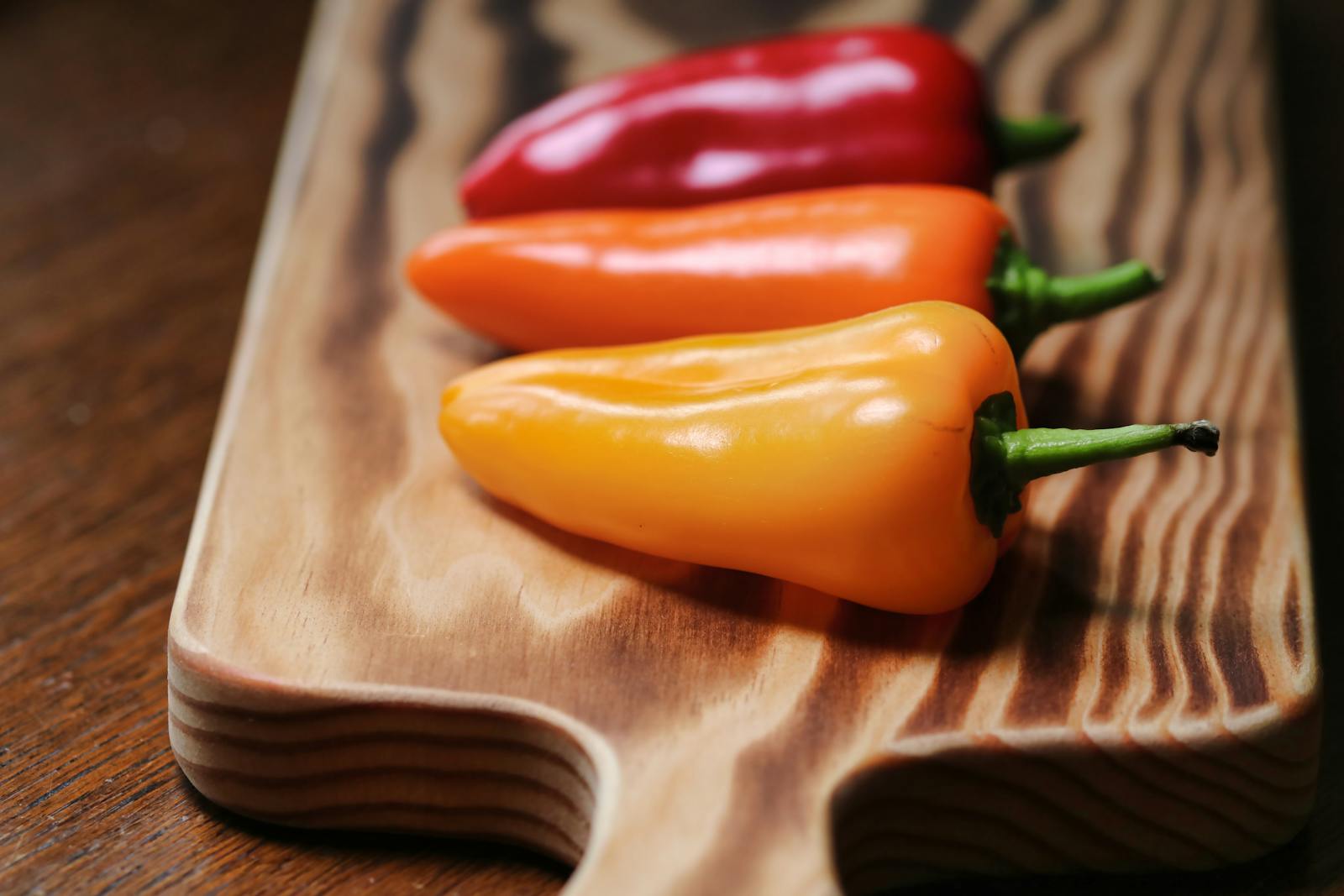Cheerful Tips for Big, Healthy Harvests
Peppers are a favourite in gardens everywhere—who doesn’t love their bright colours and bold flavours?
If you’ve tried growing peppers before, you know they’re picky about what goes into their soil.
That’s why many gardeners ask, what is the best compost to grow peppers for big, healthy yields?
Composting is simply nature’s way of recycling. By using organic scraps and waste, we create a rich mix known as compost, which peppers love.
Whether you use a simple pile, a compost tumbler, or even try your hand at vermicomposting (raising worms to break down food scraps), you’re building healthier soil while reducing landfill waste.
It’s good for your plants and good for the planet.
Choosing the best compost for your pepper plants makes a real difference. In this guide, you’ll learn what makes great compost, how to make it at home, and which composting tools work best for busy families and eco-friendly households.
If you’re curious about different ways to turn household scraps into garden gold, you might enjoy exploring these 6 Effective Composting Methods.
You don’t need a fancy setup to get started. There’s a composting method for everyone, and your peppers will thank you for the extra care!
What Is Composting and Why Is It Important for Growing Peppers?
 Photo by Dino
Photo by Dino
Curious why your peppers keep craving more from the soil? Composting is the secret ingredient that transforms food scraps and yard waste into nutrient-rich “black gold.”
For peppers, which are often fussy about soil, using the best compost to grow peppers is like giving them a deluxe spa treatment.
Let’s unpack what composting means and why it’s a game-changer for healthy, productive pepper plants.
What Is Composting?
Composting is nature’s recycling center right in your backyard. When you gather kitchen scraps, garden clippings, and even shredded paper, microbes and tiny soil critters break them down into a rich, earthy material called compost.
- Compost acts as a slow-release fertilizer for your soil.
- It boosts soil structure, moisture retention, and brings helpful organisms to the table.
- Methods for small gardens include simple heaps, a compost tumbler, or vermicomposting with worms.
For a simple breakdown, composting is the process of turning waste into plant food. It works through heat, bacteria, and the right balance of greens and browns.
According to the EPA’s composting basics, it’s one of the simplest activities anyone can do to support healthy soil and reduce waste.
Why Compost Matters for Peppers
Peppers are nutrient-hungry—almost like teenagers after a sports match.
They need consistent moisture, lots of organic matter, and balanced nutrition to thrive. Compost is their natural best friend.
Here’s why compost is so important for growing peppers:
- Provides Key Nutrients: Compost supplies essential nutrients slowly, so peppers always have something to nibble on.
- Improves Soil Texture: Loose, crumbly soil helps roots grow strong and wide.
- Boosts Water Holding: Compost-rich soil keeps water near the roots, so peppers don’t get thirsty between watering.
- Encourages Root Health: A healthy root zone means bigger, tastier, and more colourful peppers.
Peppers love steady nutrients. Compost helps avoid the dreaded blossom-end rot (those ugly black spots on the bottom of peppers) by supplying calcium in a way plants can use.
Varieties of Composting for Pepper Growers
There’s more than one way to make compost at home.
If you have limited space or want fast results, consider a compost tumbler. These handy bins make it easy to turn your pile, control moisture, and keep pests at bay.
Curious about another approach?
Try vermicomposting. Worms chew through food scraps, leaving behind a super-charged material called worm castings.
These are especially great for container pepper plants and seed starting mixes. For more tips, check out Vermicompost: The Organic Game-Changer for Your Garden.
For readers who want to take it a step further, see our guide on starting composting at home for practical steps and advice on picking the right system for your household.
Composting and Sustainability
Making compost helps your peppers and the planet. By recycling leftovers, you cut down on landfill waste and lower your carbon footprint.
Composting also teaches kids and families how to reuse and respect natural cycles, which is a win-win for everyone.
If you’re looking to learn even more about different composting methods, check out these 6 effective composting methods to discover new ways to turn scraps into rich, pepper-friendly compost—without any fuss.
Quick Facts About Compost for Peppers
- Compost should be dark, crumbly, and smell earthy when it’s finished.
- Always mix a generous layer into your garden bed before planting peppers.
- If using a compost tumbler or vermicomposting bin, harvest when contents look like rich soil with no big chunks left.
You don’t have to be an expert to make the best compost to grow peppers—just start with what you have, and let nature do the heavy lifting.
For more practical advice, the Composting 101 guide offers a good starting point, especially for new gardeners.
Best Compost Ingredients and Mixes for Healthy Pepper Plants
Healthy, hearty peppers start with the right compost mix.
Your compost pile is more than just a dumping ground for kitchen scraps—it’s the secret sauce for growing strong, productive pepper plants.
Choosing the best compost to grow peppers doesn’t need to be complicated.
With the right balance of ingredients and a little know-how, you’ll set your peppers up for a bumper harvest.
The Magic Mix: Ideal Compost for Peppers
 Photo by Mateusz Feliksik
Photo by Mateusz Feliksik
Building a compost mix for peppers is a bit like making soup—get the ingredients and ratios right and everything else falls into place.
Peppers are hungry for nutrients and love compost that’s full of life.
Here’s what your compost should look like for the best pepper growth:
- Greens vs. Browns: Pepper-friendly compost needs the classic balance of “greens” (fresh items like veggie scraps and grass clippings) to “browns” (dry leaves, cardboard, shredded paper). A good rule is to aim for a 2:1 ratio—two parts browns for every part green. Too many greens make compost soggy and smelly, while too many browns slow things down.
- Moisture: Compost should be as damp as a squeezed-out sponge. Not too wet, not bone dry. This keeps microbes happy and productive.
- Texture: Peppers thrive when compost is fine and crumbly with no big chunks. Sift your compost before using, or allow it to fully break down in your pile or bin.
Vermicomposting is perfect for pepper growers, especially if you plant in containers. Worm castings from vermicomposting bins are packed with nutrients and beneficial microbes.
These will help your peppers withstand pests and produce bigger, tastier fruit.
Compost tumblers also make an excellent addition to your garden toolkit. They keep compost contained and easy to turn, which controls smells and speeds up decomposition.
Tumblers are especially ideal for small spaces or families who want to keep things tidy.
To fortify your compost, add a blend of:
- Fruit and veggie scraps
- Coffee grounds and tea bags
- Crushed eggshells (for added calcium, which helps prevent blossom-end rot)
- Shredded leaves or small twigs
- Clean straw or untreated cardboard
If you want extra insight on preparing rich, well-balanced compost for peppers, see this guide on starting composting at home.
For gardeners looking to tweak their mix even further, adding worm castings can really boost your pepper yields.
More details on the soil side can be found in this helpful review of the best soil for pepper plants.

Common Compost Problems—and How to Fix Them
Even the most enthusiastic composter will run into a problem or two. No worries—there’s a good fix for every issue and it’s rarely as tricky as it first seems.
Here are the top troublemakers and the best solutions for each:
- Bad Smells: If your compost stinks, it probably has too many greens or is too wet. Toss in extra browns like shredded cardboard or dry leaves. Turning the pile helps air things out and quickly fixes most smelly situations.
- Pests: Rodents, flies, or ants sneaking in? Make sure you’re not adding meat, dairy, or greasy foods. Always cover fruit scraps with browns. Closed compost tumblers and well-managed worm bins are great for keeping pests away.
- Slow Compost: If the pile just sits there, the mix might be too dry, too cold, or lacking in greens. Try sprinkling water and adding grass clippings or veggie scraps for a boost. Turning the pile adds oxygen and is vital for a quick breakdown.
Quick Compost Troubleshooting Tips:
- Check moisture—add water if crumbly, add browns if soggy.
- Turn the pile weekly to bring in oxygen.
- Cut or shred large pieces to speed up composting.
- Keep a lid or tarp over your pile in rainy weather.
When in doubt, this compost troubleshooting guide covers more detail on how to spot and solve common composting problems.
For additional seasonal tips, the composting calendar shares helpful tricks to keep your pile thriving in any month.
A small adjustment here or a handful of extra browns there nearly always does the trick. Don’t be discouraged—everyone has a wobbly compost bin once in a while.
With a little practice, you’ll get a feel for what your peppers (and your compost) are craving!
Step-by-Step Guide: Making and Using Compost to Grow Peppers
Every gardener wants to boost their pepper harvest, and making your own compost is a sure way to give your plants the nutrients they crave.
Composting can feel simple once you get the hang of it—just remember, peppers love rich, crumbly compost and steady nutrition.
There are several methods, but two of the most popular are compost tumblers and vermicomposting.
And timing your compost with the seasons is just as important as what you put in the pile.
Compost Tumbler vs. Vermicomposting for Peppers
 Photo by Sippakorn Yamkasikorn
Photo by Sippakorn Yamkasikorn
The best compost to grow peppers often starts with choosing the right method for your space and lifestyle.
Compost tumblers and vermicomposting bins both create compost rich in nutrients, but each has its own perks.
- Compost Tumblers: These enclosed barrels make turning and aerating your compost easy. Just give the bin a spin. Tumblers are puppy-proof, pest-resistant, and perfect for tidy gardeners with minimal space.
- The process is faster than ordinary piles—finished compost can be ready in as little as 4-8 weeks, depending on your mix and turning rate.
- The result is a balanced, dark compost that peppers adore.
- Vermicomposting: If you’re interested in getting kids or neighbors involved, or want extra high-quality compost, add worms to your toolkit.
- Vermicomposting is the art of putting red wigglers to work in a bin, letting them transform food scraps into worm castings (the technical name for worm poop).
- These castings are loaded with helpful microbes and extra nutrients, making peppers grow lush and strong.
- Scientific trials show peppers double their growth rate in soil mixed with worm compost—see detailed comparisons at Peppers Grow Twice as Fast with Worm Compost.
Choosing the Best Fit:
- If you need quick results or want a low-fuss system, a compost tumbler is for you.
- For small spaces, indoor composting, or super-charged compost, go for vermicomposting.
- Many gardeners use both—a tumbler for yard and kitchen scraps, and a worm bin for steady, year-round castings.
If you’d like a primer on other composting methods, don’t miss the guide to 6 Effective Composting Methods, which can help you decide the best method for your pepper patch.
Seasonal Composting Tips for Pepper Growers
Peppers soak up sunshine, but their demand for nutrients doesn’t stop when the weather changes.
Knowing how to compost through the seasons helps you keep a steady supply of the best compost to grow peppers—no matter the forecast.
Spring and summer are when the compost pile heats up.
Peppers love fresh, rich compost when you set transplants out, so plan to harvest and blend in well-rotted compost before planting. During the growing season:
- Keep adding kitchen scraps and grass clippings to power up your pile.
- Turn or aerate often (especially tumblers) to keep things cooking.
- Keep the compost moist but not soggy—think wrung-out sponge.
Come autumn, fallen leaves are garden gold. Shred and layer them with veggie scraps to build a new pile or feed your worm bin for future pepper plantings.
Winter slows decomposition, but you can still collect scraps and brown materials for later. Insulate your compost or move bins to a sheltered spot if possible.
For more on adapting your compost routine to the calendar, check the Seasonal composting calendar.
You’ll find tricks to keep your bin thriving all year and your peppers thriving in every season.
Looking to fine-tune your routine even more? This guide on compost for your vegetable garden shares simple, practical steps for every type of gardener.
A little planning ahead makes sure your peppers always have access to nutrient-rich compost, setting them up for steady growth and big, colorful harvests from spring through fall.
Summary: Your Peppers’ Path to Perfect Compost
Every pepper grows best when given the right start, and that journey begins with what’s under the soil.
Think of compost as your garden’s secret recipe—one that changes scrappy leftovers into rich, pepper-pleasing gold.
Whether you lean toward a compost tumbler for its speed or vermicomposting for its powerful worm castings, the right compost truly sets your peppers up for big, colorful harvests.
Meeting your plants’ needs is simple when you break it down. Peppers thrive in soil that’s both well-fed and well-drained.
Getting compost right means following a few easy steps and making small changes to match the seasons.
With some care, you’ll see sturdy stems and healthy leaves every time. Here’s a short guide to keep you on track at every stage.
The Compost Journey: Start with the Basics
Before your first seedling even pokes through, healthy compost gets to work. Mixing the best compost to grow peppers into your beds makes a huge difference.
Every good mix should balance “greens” (like fruit peels and coffee grounds) and “browns” (dry leaves or shredded cardboard).
- “Greens” bring in nitrogen, speeding up decomposition.
- “Browns” add carbon, helping control moisture and improving texture.
Use your compost tumbler for a mess-free, contained option in smaller gardens—great for families or anyone short on space.
It’s easy to turn and keep pests away, so you get tidy, finished compost fast. Those with a little patience (and a love for garden science) can set up a vermicomposting bin instead.
That lets worms break down kitchen scraps, producing powerful worm castings that boost growth even more.
Need guidance getting started? The guide to starting composting at home has step-by-step directions for first-timers.
What Perfect Compost Looks and Feels Like
You’ll know you’ve made the right mix when your compost is:
- Dark, crumbly, and smells like a forest floor.
- Free of big chunks or sharp materials.
- Holds together lightly when squeezed, without feeling muddy.
Peppers like compost that’s fine textured so their roots can grow deep and spread wide. Good compost holds water but never stays soggy—think of squeezing out a wet sponge.
Mixing a few handfuls into each planting hole or your entire garden bed gives peppers an instant boost.
If you want to fine-tune your results, several gardeners swear by blending regular compost with a small scoop of worm castings.
This combination supports peppers through their full season—just like adding the best players to your team lineup.
Tips for Consistent Pepper Progress
Here are tried-and-true habits to help your compost (and peppers) stay healthy all year:
- Add kitchen scraps and leaves as you have them, keeping the pile balanced.
- Turn or aerate compost weekly, especially if you use a tumbler.
- Keep the pile moist but never soggy.
- Let worms work at their own pace, feeding them soft scraps and keeping their bedding damp.
If you want more insider tricks, the Composting Calendar Tips page shares advice for every season.
Keeping Soil and Peppers in Top Shape
Growing peppers is much easier with a compost system that fits your lifestyle. Experiment with what works best—some gardeners use a compost tumbler and a small worm bin to cover all their bases.
Ready to troubleshoot problems or tackle next steps?
Learn how to make compost easily at home from sources like Homesteading Family’s easy composting guide.
By making compost a regular piece of your pepper-growing schedule, you set the stage for strong, steady plants.
Healthier compost means better peppers, plain and simple. Your path to bold, beautiful harvests starts right here.
FAQ: Best Compost to Grow Peppers
Every pepper grower wants answers to get those big, crunchy, colorful harvests.
There’s a lot of advice out there, so let’s clear up the most common questions about using compost when growing peppers.
This FAQ is packed with real-world advice and practical tips so you can give your pepper plants the boost they need.
Can I grow peppers in compost only?
Growing peppers in pure compost sounds tempting, but your plants do best when compost is blended with other materials.
Pure compost can be too rich and may become heavy or compacted over time. For container peppers, experienced gardeners suggest mixing:
- 2 parts compost (homemade, municipal, or well-aged)
- 1 part peat moss or coco coir
- 1 part perlite or vermiculite
This blend keeps things airy, drains well, and still delivers all the good stuff peppers crave.
You’ll find even more mix ideas from seasoned growers sharing tips like this on growing peppers in compost only.
What’s the best compost mix for peppers in pots?
Container peppers need loose and rich compost that won’t hold too much water.
The gold standard is usually a blend that combines nutrient-rich compost, moisture-retaining materials, and a bit of extra drainage.
- A popular mix: 1/2 peat moss or coco coir, 1/4 compost, and 1/4 perlite.
- You can also use worm castings from vermicomposting as a nutrient boost.
- Avoid heavy “garden soil” in pots; it’s better suited for raised beds and ground planting.
For detailed mix recommendations, see this breakdown of the best soil for pepper plants.
Should I use finished compost or partly-rotted compost for peppers?
Always use finished compost when growing peppers. Finished compost is dark, crumbly, and smells earthy.
It’s gentle on roots, provides steady nutrition, and won’t compete with your plants for nutrients or oxygen.
Partly-rotted material can actually pull nitrogen out of the soil while it breaks down, making your peppers slow to grow and weak.
If you’re just starting composting at home, check out these easy steps in our home composting guide.
Finished compost is always best for peppers and most other vegetables.
How do I add compost to pepper plants?
Peppers are happiest when you mix 2–4 inches of finished compost into the soil before planting or transplanting.
For established plants, you can “top-dress”—spread a thin layer of compost around the stem, then gently scratch it into the surface.
Water well afterward to move nutrients down to the roots.
- Add compost to planting holes when transferring seedlings outdoors.
- Mulch with compost to hold moisture and keep weeds down.
- Boost pots every few months with a small layer of worm castings or sifted compost.
This is a great time to try out a compost tumbler if you want simple, steady compost all season. Tumblers are clean, pet-safe, and keep the process contained.
Is compost from kitchen waste safe for peppers?
Yes, as long as the compost is fully broken down and doesn’t include dairy, meat, or fatty scraps. These can cause bad smells or attract unwanted critters.
Kitchen waste composted properly provides excellent nutrition for peppers.
If you’re curious about what can (and can’t) go in the bin, you might like the Don’t Toss It Campaign for creative ideas on kitchen waste.
Does vermicomposting make a difference?
Absolutely! Worm castings from a vermicomposting bin are like energy drinks for peppers.
Even a handful mixed into each planting hole can help plants start faster and avoid common nutrient problems.
Use both compost from your tumbler and worm castings together for the best compost to grow peppers.
How can I tell if my compost is ready for pepper plants?
Finished compost is the texture of rich soil, with a dark color and a clean, earthy smell. If you still see lots of twigs, chunks, or can spot what you tossed in last week, it needs more time.
For tips on seasonal compost monitoring, the Composting Calendar Tips page covers what to look for at every time of year.
Can you put too much compost on peppers?
Yes, more isn’t always better. Too much compost can make plants grow leaves instead of fruit or cause roots to rot if it stays too wet.
Aim for a moderate amount—about 2–4 inches mixed into the soil or a thin mulch.
For pots, limit compost to one-quarter or one-third of your total mix.
What should I do if my compost is too wet or heavy?
Fix wet compost by adding more dry materials, like shredded cardboard or leaves. If it’s heavy in pots, mix in perlite, vermiculite, or coarse sand.
Good compost for peppers should feel like a wrung-out sponge—not soggy, but not bone dry either.
If you run into problems, peek at the Compost Charm guide on 6 effective composting methods for troubleshooting tips.
By keeping your compost healthy and choosing the right mix, you’ll set your peppers up for success every time.
Trust your senses, use a little kitchen common sense, and don’t be afraid to ask questions—there are great resources and communities full of friendly advice!





